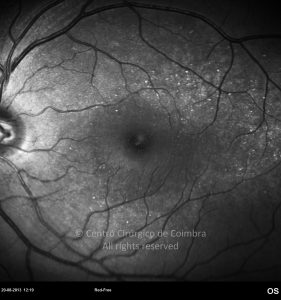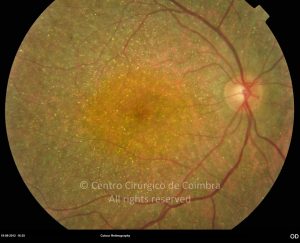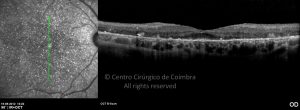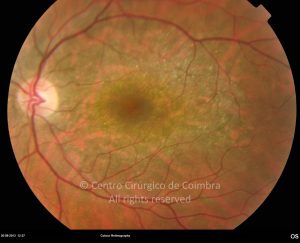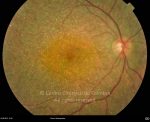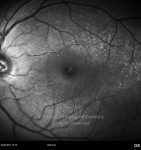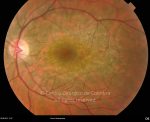Bietti crystalline dystrophy (BCD), also called crystalline retinopathy, is a chorioretinal degeneration characterized by the presence of yellow-white crystals in the retina. BCD is a genetic disease with autosomal recessive inheritance. The diagnosis can be confirmed by the identification of CYP4V2 disease-associated mutations.
Due to a progressive atrophy and degeneration of the retinal pigment epithelium/choroid, patients present reduced visual acuity, poor night vision, abnormal retinal electrophysiology, visual field loss (peripheral or central scotomas), and often impaired color vision, usually during their second and third decade of life.
Ophthalmoscopy discloses multiple glistening intraretinal dots scattered throughout. These crystalline deposits have been observed to diminish or even disappear in areas of severe chorioretinal atrophy, as disease progresses. One quarter to one third patients present deposits in the corneal limbus.
The OCT show hyper-reflective dots thought to represent the crystalline deposits that appear to reside in the RPE-choriocapillaris complex.
Fluorescein angiography reveals patchy hypofluorescent areas of RPE and choriocapillaris atrophy and a generalized disturbance of the RPE. Adjacent areas with no crystals show confluent loss of RPE and choriocapillaris.
At present, there is no treatment to improve the visual deficit and to prevent the progression of the disease.
Differential Diagnosis
- Particulate Retinopathy
- Drug-induced crystalline maculopathy: methoxyflurane, tamoxifen, canthaxanthin
- Pseudoretinitis Pigmentosa





